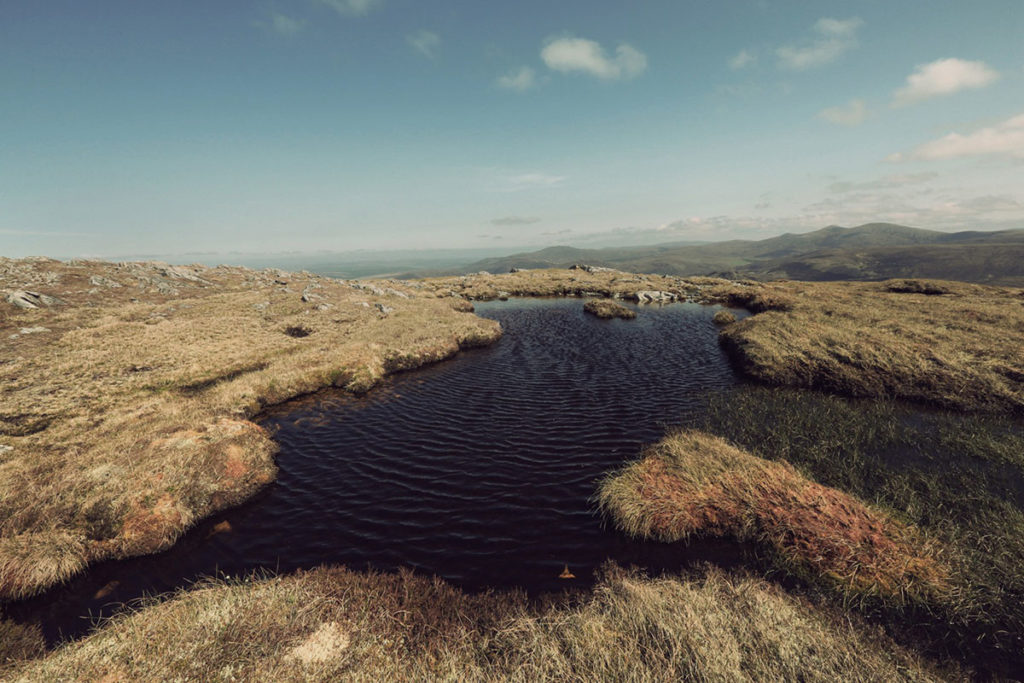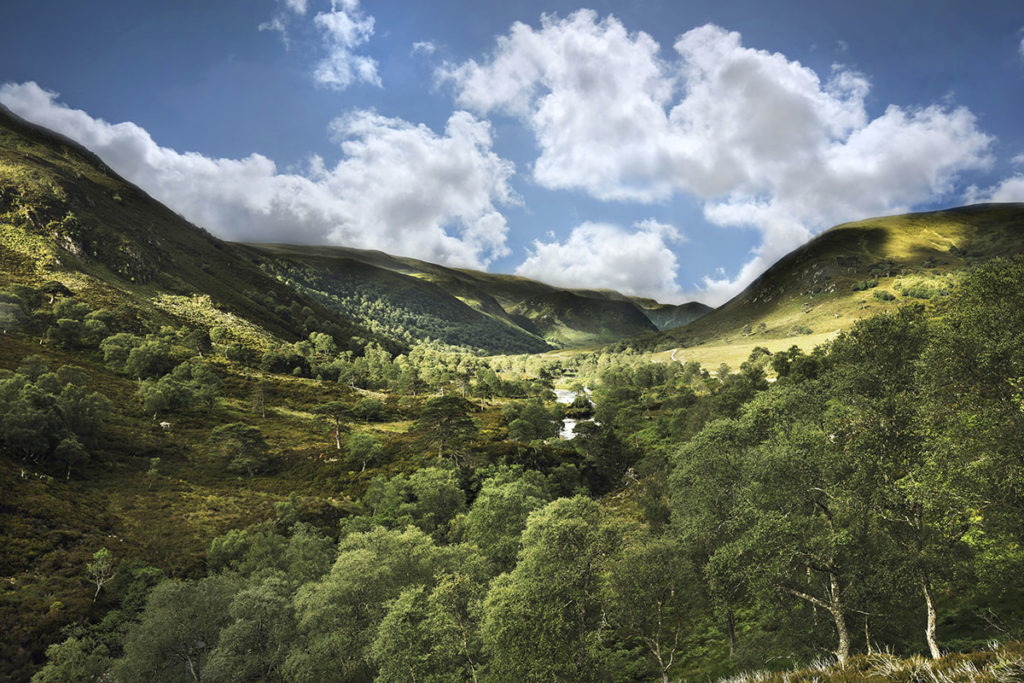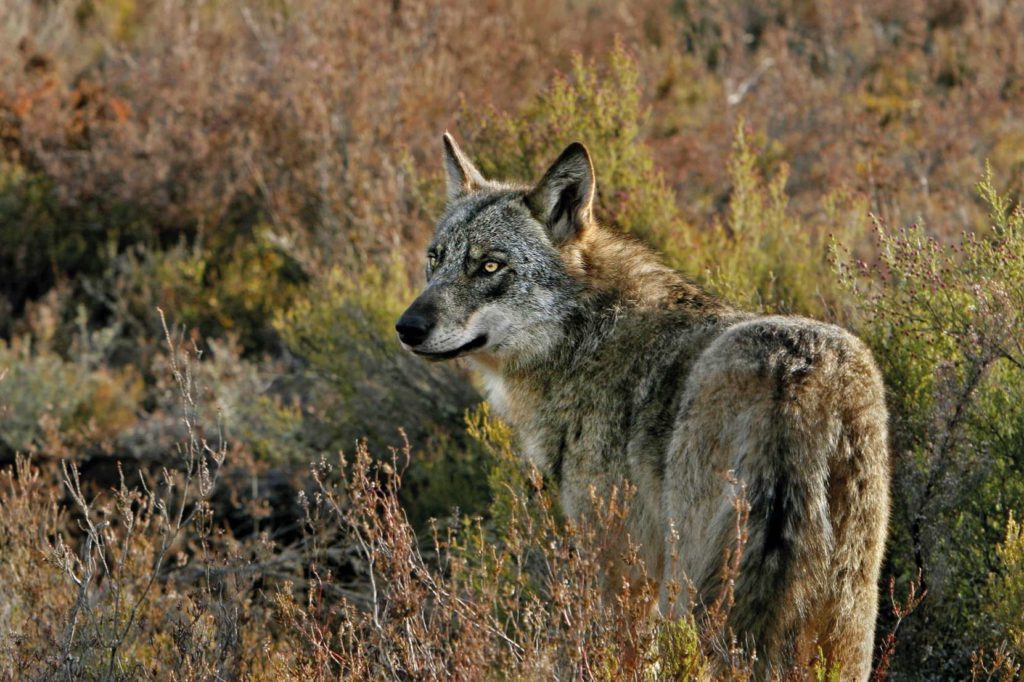Spain's bear population is growing, thanks to crucial conservation work.

Too often, our thinking around climate and species loss is segregated. We recognise that climate breakdown and species loss are co-occurring, and that they are driven by the overlapping forces of land-use change, habitat loss, and infrastructural expansion.
At The European Nature Trust, we recognise that healthy populations of wild animal species significantly increase carbon drawdown and storage. We have long understood that healthy, functioning ecosystems are the most carbon rich; that by restoring all the pieces of European ecosystems, we create the conditions for natural processes to occur, and increase the amount of carbon being stored in Europe’s landscapes.
The European Nature Trust seeks to restore wild landscapes, protecting the species that remain, and reintroducing those that have been lost. Wild animals play crucial roles in controlling carbon exchange between ecosystems and the atmosphere through their foraging, by redistributing seeds and nutrients over vast land- and sea-scapes; by trampling and compacting soils and sediments; by ranging over vast areas that require protection. Through these activities, species can enhance the carbon density of plant communities; diversify vegetation and create landscape mosaics to prevent CO2 releases from uncontrollable wildfires; and keep carbon locked in soils.
That is why The European Nature Trust has recently signed Scotland’s Climate Assembly Civic Charter – a statement of intent across all walks of Scottish society, providing recommendations to the Scottish Government to act on climate change. You can read Scotland's Climate Assembly Civic Charter here, or watch a 2-minute summary here.
The Charter made a broad base of recommendations ahead of COP26. A vital theme was the restoration of wild lands. Some 97 percent of the Citizen’s Assembly agreed that the Scottish government should raise ambitions to restore peatlands and boost native woodlands to enrich the amount of carbon being stored in our lands. Children involved in the Assembly recommended that we create more woodlands and peatlands, while helping landowners to achieve this collective vision. A whopping 91 percent of the Assembly agree that we must fulfil Scotland’s carbon sink potential by incentivising landowners to maximise the land available to nature.
We advocate for the broader restoration of peatlands. Since 2012, only 25,000 hectares of degraded peatlands have been restored in Scotland. The Scottish Government has committed to tree planting efforts of 15,000 hectares per year from 2024, but there is less ambitious dedication to regenerating native woodlands, which would have broader environmental benefits. At this critical juncture, we must raise our climate ambitions: the terrestrial carbon sink must be enriched; native woodlands must be better protected and allowed to expand; the species within them must be restored.
To us, the science is clear. To protect European species – from the charismatic, to the often overlooked – we must protect the large areas of quality, carbon-rich habitat that they need. Ecosystems, when functioning correctly, are the gatekeepers of climate security.

In Scotland, through our partnership with Alladale Wilderness Reserve, we have replanted nearly 1 million native tree species on lands that have been clear-cut over the centuries. Our vision is to restore vast tracts of what was once the original Caledonian Forest – a wilderness, once roamed by wolves, lynx and elk. By replanting Scot’s pine, birch, juniper, oak, rowan, alder, and other natives, we have established a seed bank for wider natural regeneration, while allowing a profusion of biodiversity to flourish. Peatlands are the greatest terrestrial carbon sink on the planet, storing more carbon than all the world’s forests and vegetation combined. Yet, during the 18th, 19th and 20th centuries, ploughs were used to drain thousands of square miles of peatland in Scotland. In 2012, we helped to launch a peatland-restoration project at Alladale, now predicted to sequester 49,100 tonnes of CO2.
Scotland’s waterways must also be restored. To raise awareness, we have recently funded the production of Riverwoods, a documentary demonstrating how Scotland’s rivers could be reborn. Beavers are a critical part of increasing the carbon storage of riparian woodlands and river catchments. TENT is now supporting the Beaver Trust in efforts to reintroduce beavers at the national-level, while expanding their range and habitat. We have funded several PR trips to increase engagement with the issue.
Bears, wolves and lynx need the virgin forest habitats of Romania. We are continually supporting Foundation Conservation Carpathia in their efforts to secure the highest level of protection for Romania’s virgin forests. FCC’s efforts to maintain habitat for Romania’s wildlife are essential to securing a future for one of Europe’s last remaining, carbon-rich wildernesses, ensuring that Europe’s lungs can keep drawing down the carbon we emit.
We are supporting Rewilding Portugal in their efforts to restore a crucial wildlife corridor in Portugal’s Greater Côa Valley, which will help to pump carbon back into the land. Herbivores, wild and semi-wild, will help to diversify the vegetation structure, creating richer mosaics of native grassland and later-stage successional forest communities. Rewilding Portugal is working to expand the range of the Iberian wolf, which will regulate the dance between fauna and flora, and diversify the vegetation to prevent the spread of rampant wildfires, which are increasing in intensity and frequency with climate change.

Elsewhere from Europe, the science is irrefutable. The Serengeti ecosystem has switched from a major source of carbon to a sink, following the restoration of the wildebeest population to their historic levels. It now takes up 8 million tons (or 0.008 Gigatons, Gt) of carbon annually, the equivalent of East Africa’s annual carbon emission from fossil fuel burning.
Trophic cascades are crucial regulators of how nutrients and carbon is distributed across terrestrial landscapes. Wolf presence in the boreal forests of Canada has shown to increase the carbon storage of the landscape by 46–99 million metric tons. Across two landscapes – Canadian boreal forests and Yellowstone National Park – wolf presence is equivalent to the removal of fossil fuel emissions from 6–20 million passenger cars per year.
Of course, then there are beavers. Findings from the Scottish Beaver Trial at Knapdale Forest documented that deer selectively browsed on the new shoots that rise from trees used by beavers, which led to an increase in aboveground biomass of riparian tree communities; now twenty riparian woodland beaver sites are being monitored for this effect in a more robust study by the University of Stirling in Tayside and Knapdale as part of a research project on beaver-deer interactions, with results expected in 2022. A 2018 study found that beaver dams and engineered wetlands increase the amount of dissolved organic carbon in rivers and riparian woodland; another 2019 study showed that beaver ponds increase the amount of organic carbon in trapped sediments.

Spain's bear population is growing, thanks to crucial conservation work.
Through the FIRNS initiative, TENT is working on a new blueprint for investment into nature recovery.
8 international journalists tell the story of Belizean conservation

